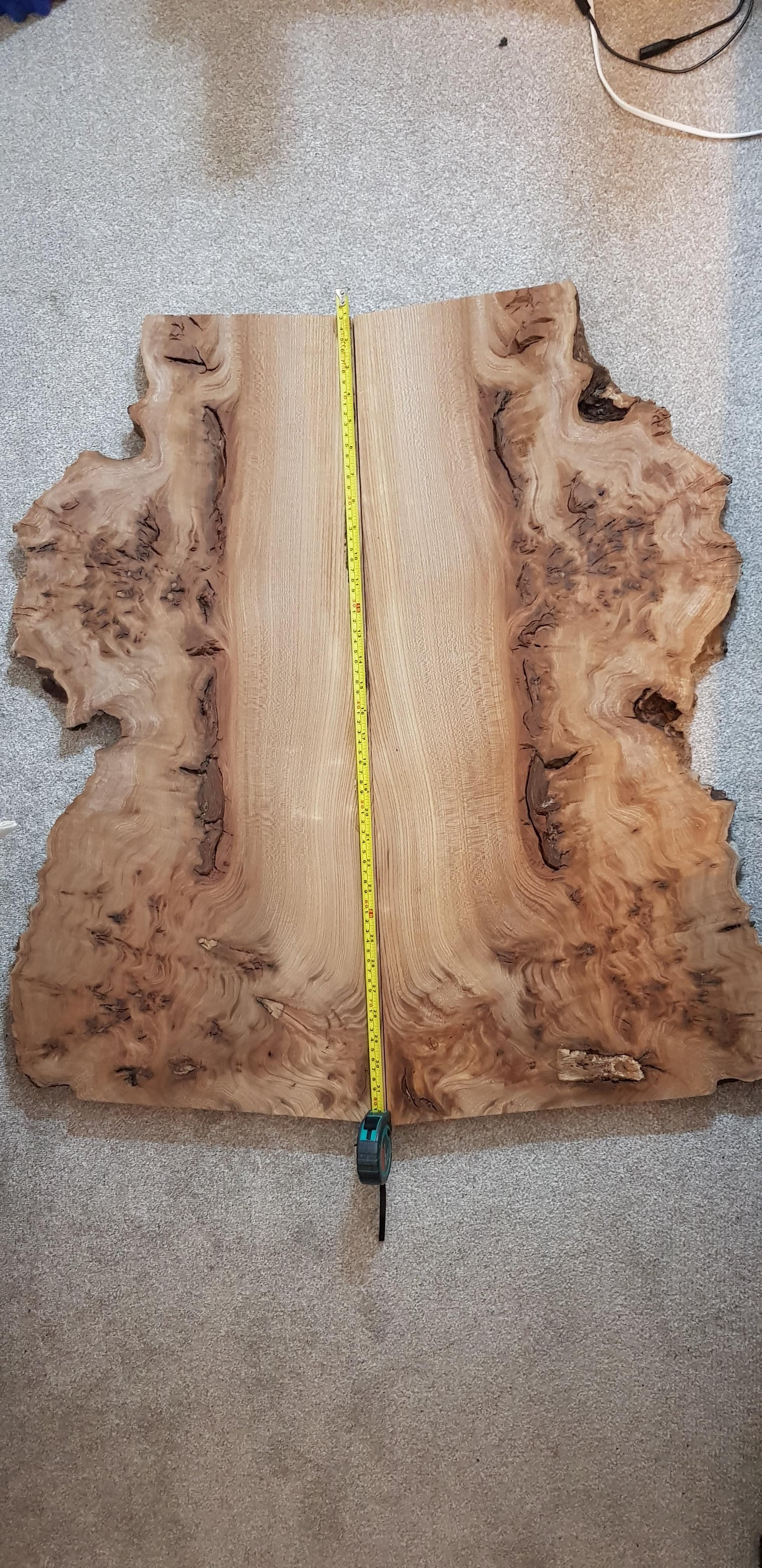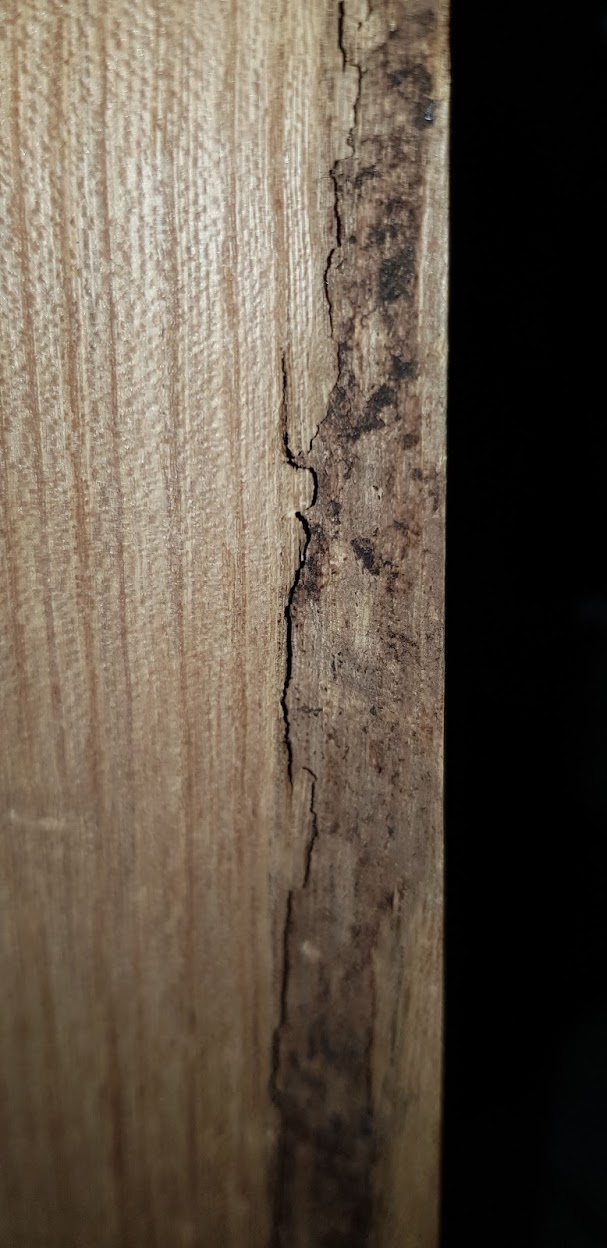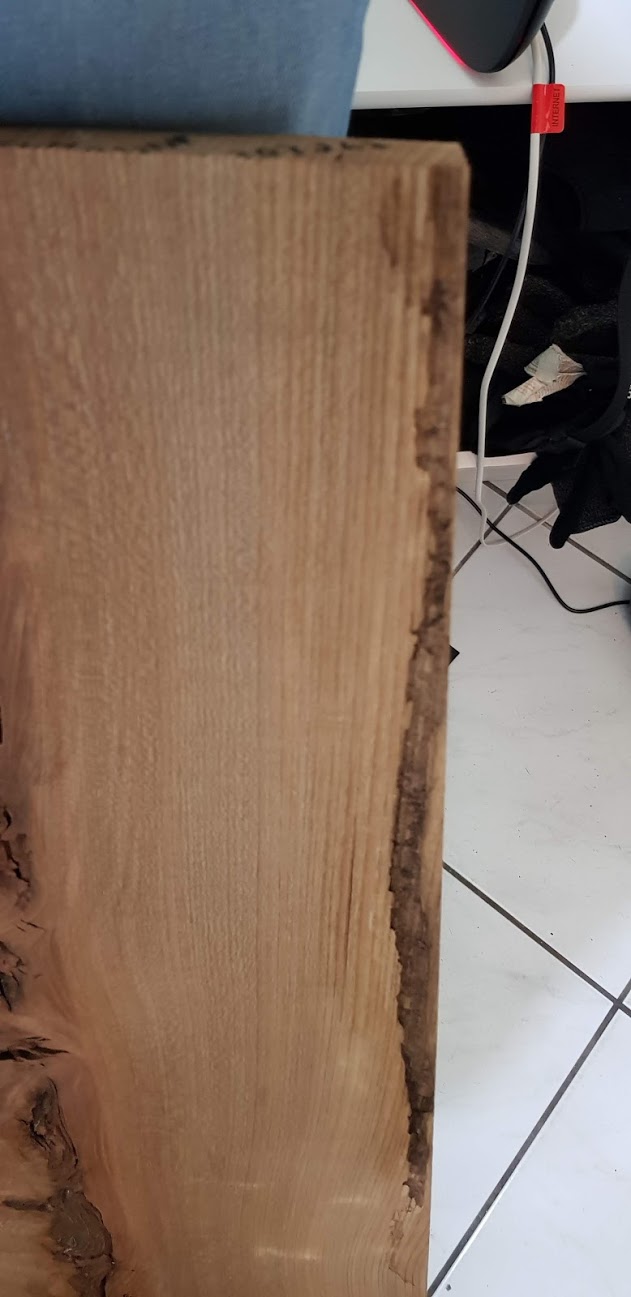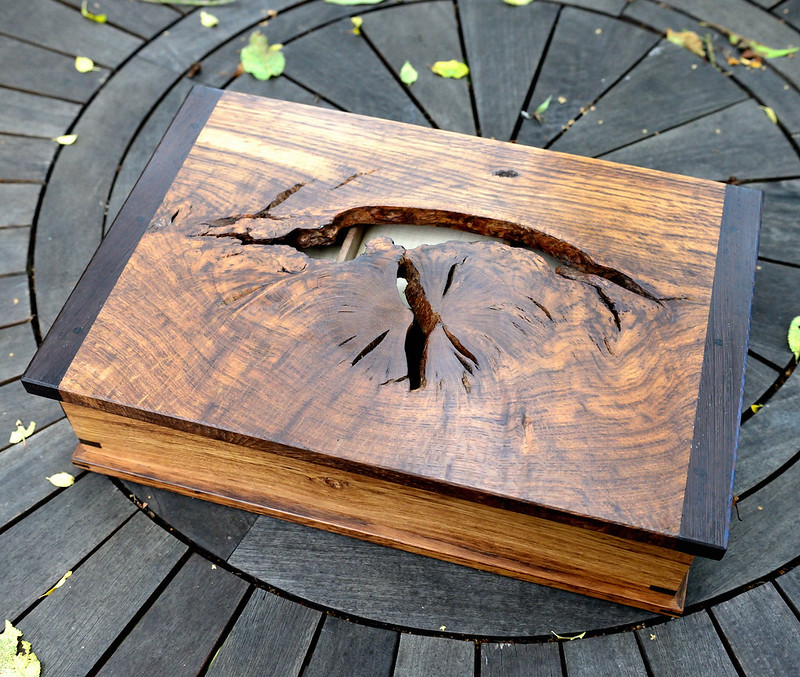I am planning to transform the following pieces of elm into a live edge coffee table but because of the way it is going to be used, I am thinking of filling the gaps and burrs with epoxy resin. There are also some areas with rot that I need to clean before adding the resin.
What is the best way of doing this? I was recommended to use a wire brush attached to a drill but can't find anything small enough that would go in the burrs? Do I need to purchase a rotatory tool? Also, what is the best way to clean the live edge? Wire brush again? For a desk I have built I used a spokeshave but due to the burrs on this one this isn't really possible

What is the best way of doing this? I was recommended to use a wire brush attached to a drill but can't find anything small enough that would go in the burrs? Do I need to purchase a rotatory tool? Also, what is the best way to clean the live edge? Wire brush again? For a desk I have built I used a spokeshave but due to the burrs on this one this isn't really possible




































